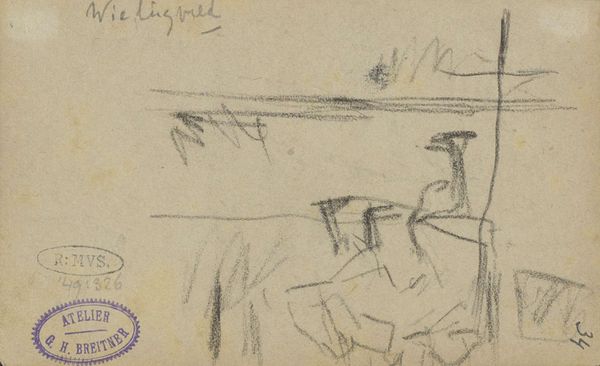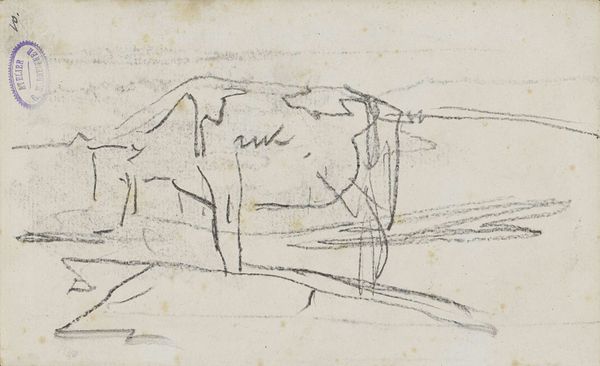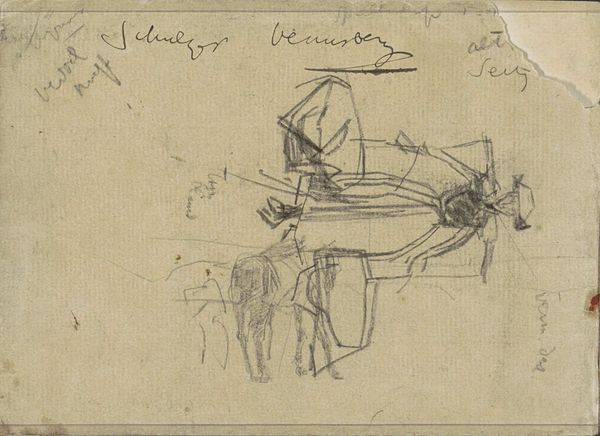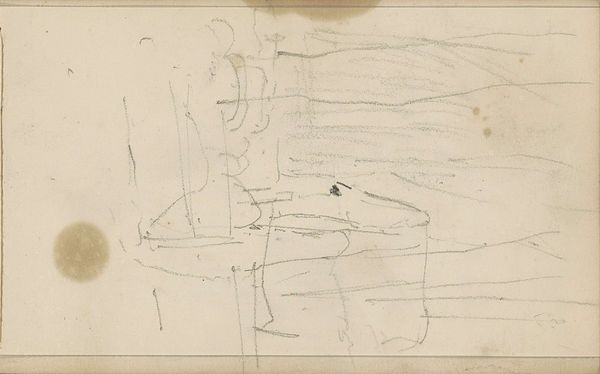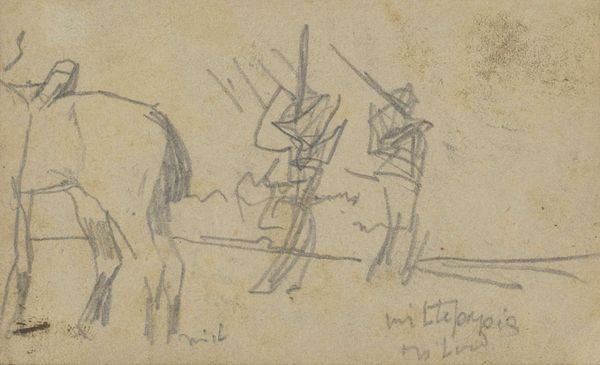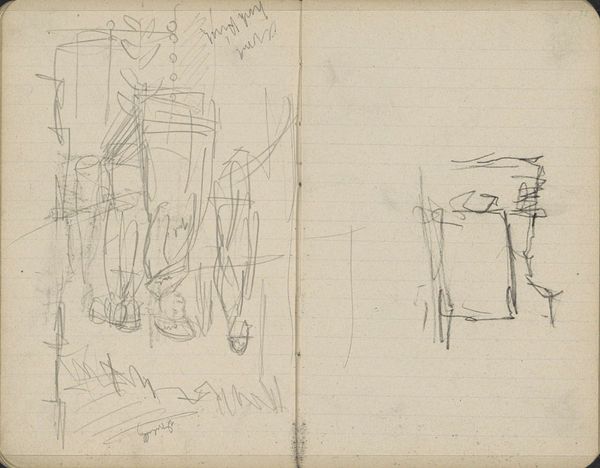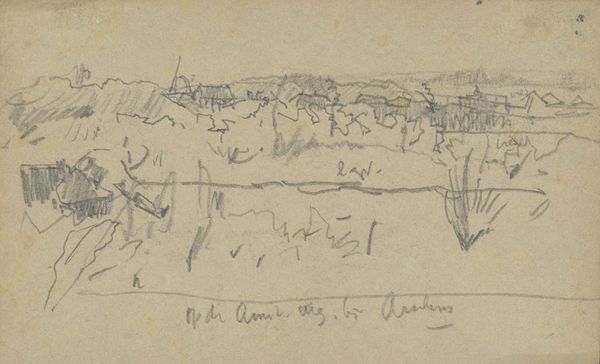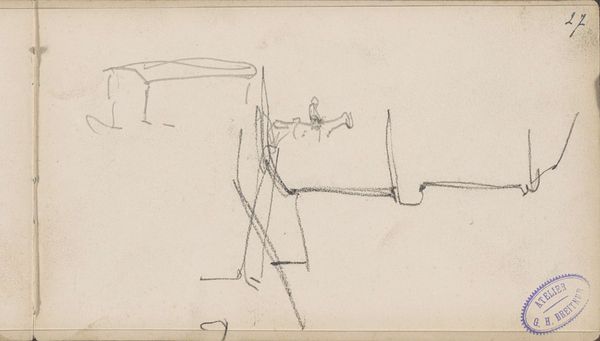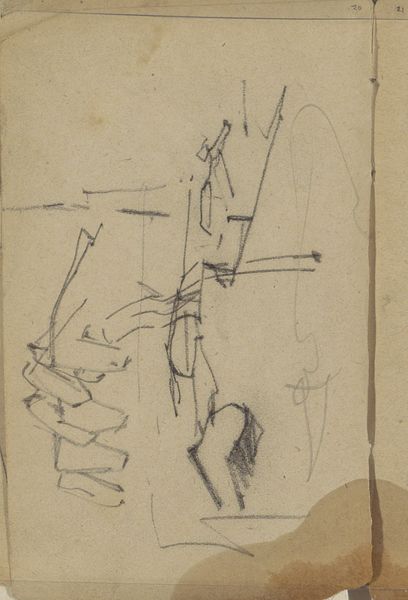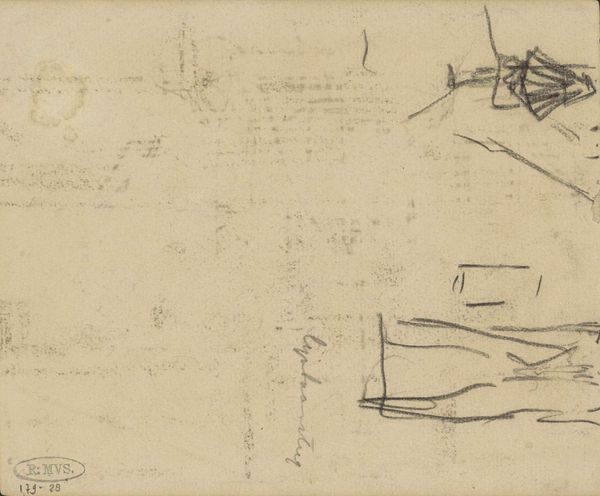
Dimensions: height 78 mm, width 128 mm
Copyright: Rijks Museum: Open Domain
Curator: George Hendrik Breitner's "Landscape with Infantry Officers on Horseback," likely created between 1882 and 1912, is before us. It’s a pencil drawing held by the Rijksmuseum. Editor: It's brisk, isn’t it? Fleeting, almost. It feels like catching a half-remembered dream. The lines are so raw. Curator: Raw is a good word for it. It's not about polished realism, it’s about capturing a moment, an impression. Breitner, steeped in Impressionism, was all about that momentary experience. I see him, perched somewhere, quickly sketching the soldiers moving across the land. I wonder what was on his mind, if anything more than, here are forms in front of me, how to translate them, quick quick. Editor: I notice the subtle social commentary that lingers beneath the surface. Here we see military figures traversing the landscape. How might this speak to the relationship between the military, power, and control over the land? Does it normalize military presence as just another element within a natural scenery? Curator: Perhaps. Or maybe Breitner was simply drawn to the visual rhythm of horses and riders, a recurring motif in his work. He seemed fascinated with urban movement: horses pulling carriages, workers bustling along the docks, a city coming into modernity. Editor: Absolutely. However, considering the period's militaristic context and rising nationalism, an artist could hardly divorce these scenes from wider socio-political realities. I would love to know how and why ordinary people regarded and integrated these shows of force into their own everyday experiences. Curator: I can see your point about military might being intertwined with national pride during this time. However, it’s the immediate energy of this pencil sketch which most enthralls me. It feels utterly spontaneous. Editor: Exactly. It shows both. I see it—the immediate capture but a trace of those questions regarding nationalism and the presence of authority as well. Perhaps these dual perspectives are exactly where this piece thrives: its ambivalence is its insight. Curator: Well, it’s like a portal, really, where sketchbooks reveal as much about artists as artists do about their subject. Editor: Indeed. It has prompted fascinating considerations on art, military power, and societal reflections.
Comments
No comments
Be the first to comment and join the conversation on the ultimate creative platform.
